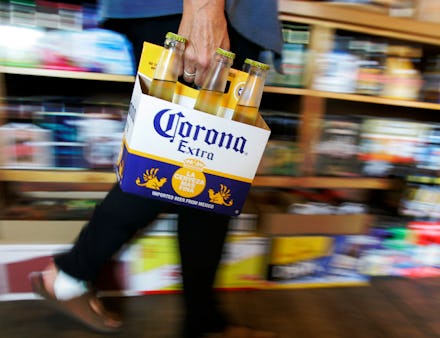Lecture Millennials All You Want: Binge-Drinking Deaths Are Most Likely to Be Older Men

For all the anti-binge drinking campaigns aimed at teens and college students, it turns out they're among the least likely group to die from excessive drinking.
A recent study from the Centers for Disease Control and Prevention shows that 15- to 24-year-olds, the age group most targeted by PSAs against alcohol abuse, make up only 5% of reported alcohol poisoning deaths in the country — that's even lower than people over 65, who registered at 6%. In reality, affluent white men between the ages of 35 and 64 make up the largest percentage of alcohol poisoning deaths.
Why is this happening? The high rate of binge-related deaths in middle-aged men could come from a past of heavy drinking. A recently published British study showed that, while most men's drinking habits are at an all-time high in their mid-20s, they develop binge-qualifying daily drinking habits through middle age, entering the higher deciles of American drinkers.
And it's here, after years of drinking and deterioration, that middle-aged problem drinkers are at greater risk of organ failure and death.
"People are not fully aware of the harms related to excessive drinking and I don't see much awareness about these issues," Dafna Kanny, senior scientist of the CDC's alcohol program, told Mic. "The relationship between drinking and driving is real and dangerous, but there are other outcomes that have nothing to do with driving."
Kanny didn't hesitate to add to the list: violence, suicide, chronic heart disease, stroke and multiple forms of cancer.
Adults, not teens. Perhaps the most surprising aspect of these numbers is the fact that binge-drinking and anti-binge-drinking campaigns are generally aimed at young people, and not the older men who are actually being effected. So why is the alcohol industry doing little more for grown, problem-drinking men than telling them not to drink and drive?
It's cynical to say, but teenagers and college students don't have any money. It's middle-aged men who regularly reach above the bottom shelf. The alcohol industry is worth $400 billion — a number that makes sense attached to the 1.5 billion binge drinking episodes estimated each year. The industry isn't actively fighting anti-drinking campaigns, but there's little incentive to tell middle-aged men to cut back — and politely asking them to sip responsibly isn't effective when they don't believe they're being irresponsible.
This is what Kanny worries about. Middle-aged men will keep drinking too much because they don't know enough about the effects of alcohol to realize their bodies aren't what they used to be.
But teens too, in a way. Truthfully, campaigns should still be directed at younger drinkers or drinkers-to-be. It's no secret that chronic alcohol abuse can damage a developing brain, so for the younger demographic, maybe the boogeyman route is the most effective strategy. But knowing alcohol's effects, why do the most prevalent campaigns for middle-aged men focus on messages like "Buzzed Driving is Drunk Driving," which has nothing to do with the alcohol that's killing 4.5 of them a day?
Without better strategies and campaigns, the country will continue adding new members to the 88,000-person excessive drinking fatality club.
"We're not talking about [quitting] alcohol altogether. We're talking about moving the curve from excessive to moderate drinking," Kanny told Mic. "We need to refer to alcohol as a risk factor, and take it judicially like we take smoking. ... We need to weigh it with the expense of life lost in this country."